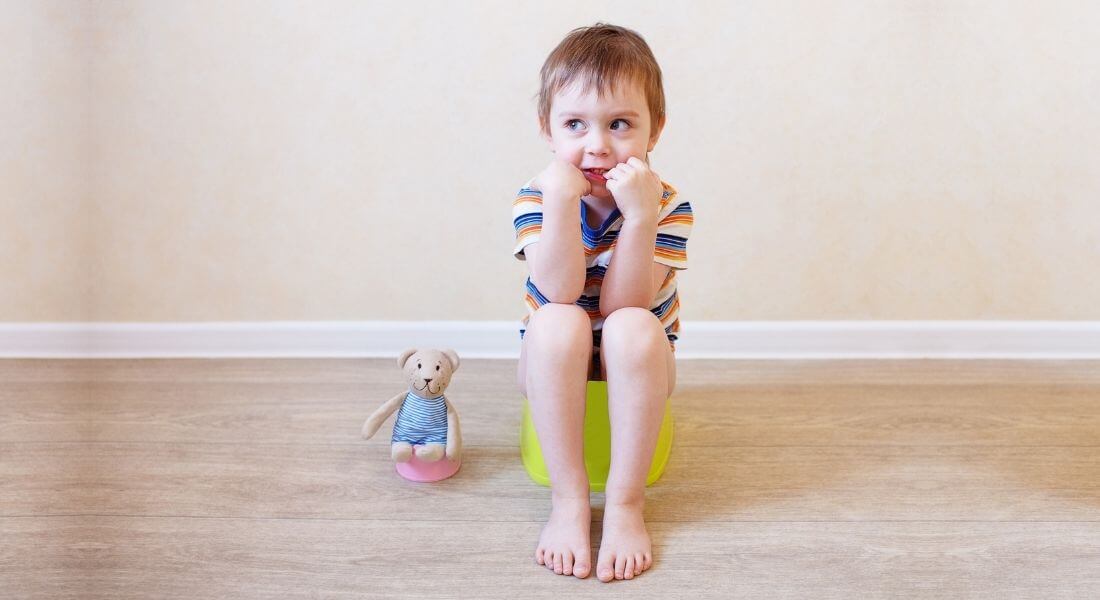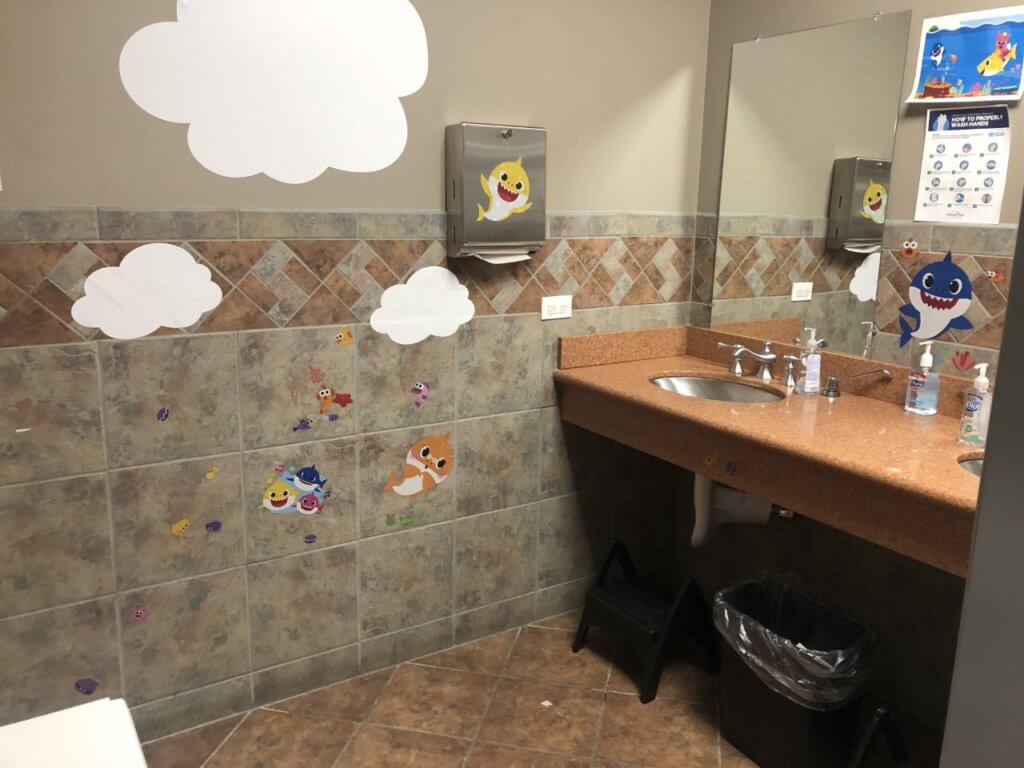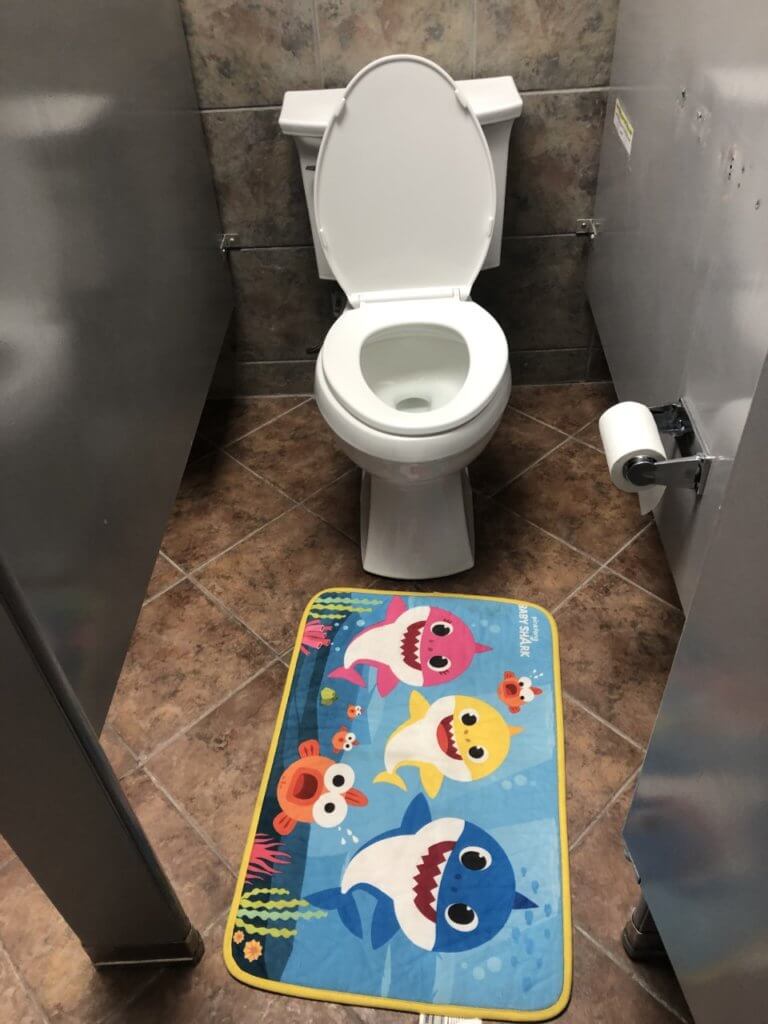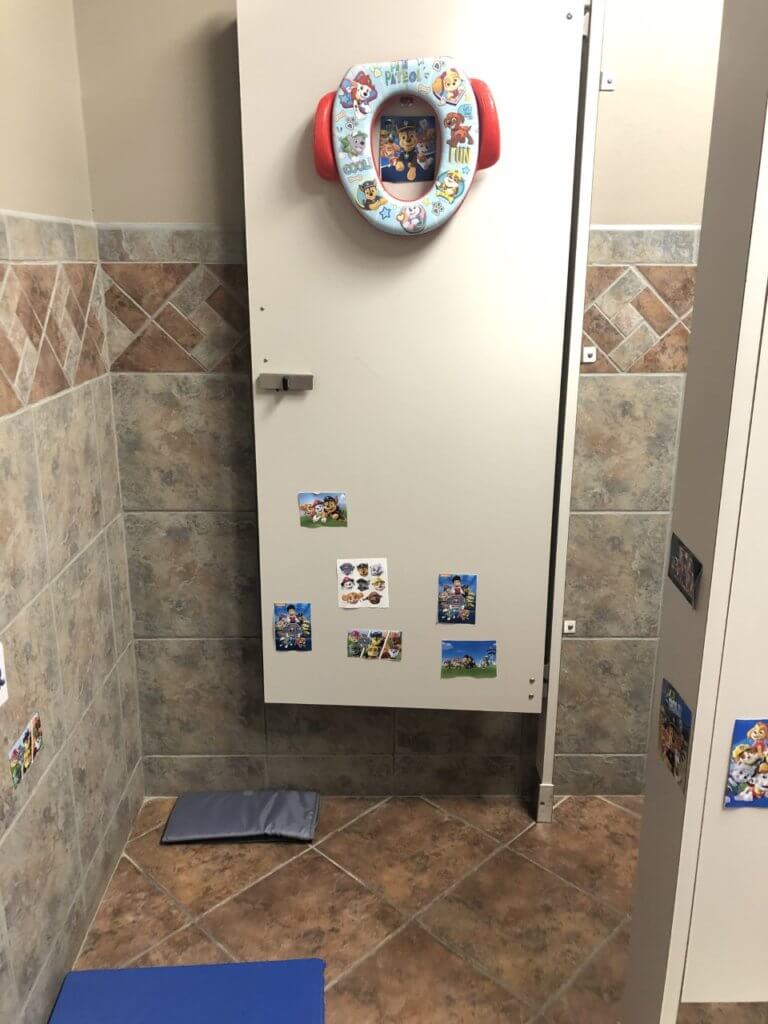Toilet Training Tips for Kids with Autism: Learn from a Hopebridge BCBA
October 13, 2021
October 13, 2021

There is a moment during the parenting experience that many moms and dads look forward to, but also simultaneously dread: toilet training. The idea of no more diapers is appealing, but the process of “potty training” can be stressful for everyone involved. Add autism spectrum disorder (ASD) into the mix, and the associated challenges can make the process all the more difficult … and often quite lengthy.
Toileting can be an added barrier for school, as many daycares, preschools and elementary schools require children older than a certain age to use the restroom independently prior to entering the classroom. Unfortunately, it is also a topic that carries a lot of stigma and feelings of shame for some kids and parents.
What you might not expect, however, is that our Hopebridge clinicians actually like working on this skill with children and their families! There is no need to be embarrassed, as toileting is a normal occurrence and some people may just need a little more support to get there it their own time.
“I love toilet training because it’s such a life-changing skill to have. It gives kids independence, while saving families more time, money and resources to spend on other things they need and enjoy,” said Hopebridge Board Certified Behavior Analyst (BCBA) Katie Meltzer.
Katie has a wealth of knowledge and extensive experience in this area, so we connected with her to share her own parents’ guide to toilet training children with autism. In this post, she answers some of the most frequently asked questions and breaks down common challenges, tips and resources for caregivers. Katie also shares how an individualized autism therapy program that includes applied behavior analysis (ABA therapy) can support families as they work toward toileting success.
Before diving in, here are a couple of terms you will notice throughout this guide:
Toilet training or toileting: We prefer to use these more formal terms over “potty training,” especially as it relates to older children.
Void: Void and voiding are the medical terms used to indicate the elimination of human waste. These are the terms we will use in this post to talk about the acts of urinating or having a bowel movement.
Read through all of Katie’s tips or jump to the question that is most important to you:
We often get asked questions like, “Do autistic children take longer to toilet train?” and “At what age should a child with autism be potty-trained?” As with most areas of autism, there is no one clear-cut answer, as each individual experiences it differently and should be treated as such.
Due to a range of challenges associated with ASD, toileting can be frustrating for neurodivergent individuals as well as discouraging for their caregivers. There are many reasons why children (and adults) with autism may experience incontinence or need extra support with hygiene. Here is a list of some of the common problem behaviors and other issues they may experience, which can make using the bathroom tougher for them and/or their caregivers.
As displayed by this list, kids may be dealing with one – or several – of these challenges that can hinder their success on the toilet.
Sometimes, there are unexpected issues that arise that may make the process more difficult. Once, while toilet training a child, the fire alarm went off while she was sitting. This was obviously quite traumatizing for her. After this, we had to do a lot of re-pairing with the bathroom to make it a happy place for her again.
Within this caregivers’ guide to toilet training, we’ll walk you through various tips for getting started, but before you begin, we highly recommend connecting with your child’s pediatrician and therapy team. It is important to first rule out any medical concerns, dietary issues or physical difficulties that need to be addressed.
Toilet training is rarely easy, particularly within the autism community. Thankfully, there are certain strategies and steps we can put in place to ease the process and make children more comfortable.
Here are 10 tips that make toilet training easier for children with autism:

Caregivers do not need special tools for toilet training, but there are some resources our Hopebridge team and parents have found beneficial.
Many of our therapists read the book, Toilet Training in Less than a Day, by Nathan Azrin and Richard M. Foxx, but it’s recommended for parents, too. It’s a best-seller, an easy read and is based directly on research. Those who prefer to listen than read may like the #dobetter Podcast episode on Rapid Toilet Training with Dr. Megan Miller and Joe Smith. It’s specific to the book, but breaks it down even further.
Books can also be helpful and fun for kids. If your child is able to copy actions, consider some “go potty” children’s books. There are options that feature Sesame Street characters, Daniel Tiger and other kids’ favorites. For modeling in a digital space, the “See Me Go Potty” app by AvaKid Productions allows parents to create an avatar that looks like their children to visually teach them the steps for toileting. If you don’t mind an audience, children can also watch their parents use the bathroom in order to become familiar with the process.
“Potty alarms” or bedwetting alarms are also useful for toilet training with kids on the spectrum. We often use them in the centers. The alarms attach to the outside of pants with a wire and sensor that goes on the inside. Any time it gets wet, it sends an alert. There are options for sound or vibration, and we have found the vibration-only setting most convenient with our kids.
We know the challenges can be overwhelming and the idea of working towards independent toileting can seem daunting, but we are here for you and your child. As with all goals for ABA therapy, we meet your family wherever you are in the process. Through our 360 Care therapy programs, we develop a customized plan that focuses on small steps and mini (but significant!) objectives that lead up to the big win.

One of the first goals we often aim for is tolerating going into the bathroom. To do this, we make the room a fun environment that includes all their favorite things—without the expectation of using the toilet. If they will not go into the restroom, nothing else matters, which is why this is a good starting point.
Recognizing the need to void and initiating the communication to ask to use the restroom are also major steps that are crucial to beginning training. A key part of behavior analysis, we help kids achieve success by using positive reinforcement. Both of these areas can be supported by ABA therapy, but some goals like these may also benefit from Hopebridge’s other interdisciplinary services, like speech therapy and occupational therapy.
Our Hopebridge centers are fully equipped with all the necessary spaces and equipment for toilet training … which even includes a “Baby Shark”-themed bathroom one of our centers! Just as it would for in-home ABA therapy, our built-in natural environments give us the ability to customize our programs to meet the needs of each child and family. For instance, we can implement rapid intensive toilet training, at which time we place all other protocols on hold to focus primarily on toileting before transitioning back into a regular daily schedule. Our spaces also enable us to take a more natural approach, when needed, especially for those who are just learning to sit. In these instances, we might practice sitting on the toilet every hour within their normal routine.
We have had a lot of toileting success stories at Hopebridge, but there is one that sticks out in my mind. I worked with an 8-year-old who came to us wearing diapers and experiencing constipation.
First, we consulted with his physician, who prescribed Myralax to alleviate his physical symptoms. On our end, we began working on tolerating sitting on the toilet, which started at around 3 to 5 seconds. We took him every hour, slowly increasing the amount of time he sat. After sitting, we provided reinforcement with a preferred item.

Once this child could sit for 5 minutes consecutively, we began rapid intensive toilet training, at which time we spent all day in the bathroom. He would spend 5 minutes on the toilet, then 5 minutes off. If he voided at any time, he could get up. Then we reinforced the behavior with a tablet and an M&M to continue to encourage him.
He started to self-initiate voiding, so we increased the duration between how long he had to sit from 5 minutes, to 10, to 15, to 30 minutes. Eventually, we were able to get him back to his normal daily routine, but would bring him to the bathroom every hour to have him void.
The next step was to teach him to initiate communication using PECS. We placed the picture right outside the bathroom door, which he would pull off and hand to us. Once he had this down, we faded it back to his room so he could do it from a greater distance. When his toileting was reliable in the center, he would also work on the steps at home to increase generalization.
The steps may seem long, but leading up to this goal was really exciting. It was the number one thing his family wanted for him. The whole process took 2 months to include communication, and it was amazing to experience his growth. This is why we do what we do!
The autism journey is not necessarily an easy one, but it’s one we cherish and know well. Our experienced professionals are passionate and equipped to provide your child with the care they need to support your family in achieving these major milestones in life. If you think your child could benefit from our autism services, don’t hesitate. Fill out our online form to schedule a diagnostic assessment or ABA evaluation at one of our Hopebridge centers across the country.
*Informed consent was obtained from the participants in this article. This information should not be captured and reused without express permission from Hopebridge, LLC. Testimonials are solicited as part of an open casting call process for testimonials from former client caregivers. Hopebridge does not permit clinical employees to solicit or use testimonials about therapeutic services received from current clients (Ethics Code for Behavior Analysts 5.07-5.08; BACB, 2020). Hopebridge does not provide any incentives, compensation, or renumeration for testimonials provided by a former client or client caregiver.
Tips and Advice
October 07, 2025
A BCBA Job with Built-In Training: Inside Hopebridge’s Bridge Program
Tips and Advice
March 03, 2020
How to Brush Teeth and Visit the Dentist with a Child with Autism
Tips and Advice
December 20, 2022
5 Ways to Support the Autism Community During the Holidays